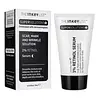What's inside
What's inside
 Key Ingredients
Key Ingredients

 Benefits
Benefits

 Concerns
Concerns

 Ingredients Side-by-side
Ingredients Side-by-side

Water
Skin ConditioningGlycerin
HumectantPrunus Armeniaca Kernel Oil
MaskingPersea Gratissima Oil
Skin ConditioningCaprylic/Capric Triglyceride
MaskingSqualane
EmollientCetearyl Alcohol
EmollientGlyceryl Stearate Se
EmulsifyingRetinol
Skin ConditioningPhenoxyethanol
PreservativeHydroxyethyl Acrylate/Sodium Acryloyldimethyl Taurate Copolymer
Emulsion StabilisingBenzyl Alcohol
PerfumingPhospholipids
Skin ConditioningTocopherol
AntioxidantPolyacrylate Crosspolymer-6
Emulsion StabilisingGlycine Soja Oil
EmollientEthylhexylglycerin
Skin ConditioningGlycolipids
Skin ConditioningDehydroacetic Acid
PreservativePolysorbate 60
EmulsifyingSorbitan Isostearate
EmulsifyingTrisodium Ethylenediamine Disuccinate
Glycine Soja Sterols
EmollientT-Butyl Alcohol
PerfumingWater, Glycerin, Prunus Armeniaca Kernel Oil, Persea Gratissima Oil, Caprylic/Capric Triglyceride, Squalane, Cetearyl Alcohol, Glyceryl Stearate Se, Retinol, Phenoxyethanol, Hydroxyethyl Acrylate/Sodium Acryloyldimethyl Taurate Copolymer, Benzyl Alcohol, Phospholipids, Tocopherol, Polyacrylate Crosspolymer-6, Glycine Soja Oil, Ethylhexylglycerin, Glycolipids, Dehydroacetic Acid, Polysorbate 60, Sorbitan Isostearate, Trisodium Ethylenediamine Disuccinate, Glycine Soja Sterols, T-Butyl Alcohol
 Reviews
Reviews

Ingredients Explained
These ingredients are found in both products.
Ingredients higher up in an ingredient list are typically present in a larger amount.
This ingredient is an emollient, solvent, and texture enhancer. It is considered a skin-softener by helping the skin prevent moisture loss.
It helps thicken a product's formula and makes it easier to spread by dissolving clumping compounds.
Caprylic Triglyceride is made by combining glycerin with coconut oil, forming a clear liquid.
While there is an assumption Caprylic Triglyceride can clog pores due to it being derived from coconut oil, there is no research supporting this.
Learn more about Caprylic/Capric TriglycerideTocopherol (also known as Vitamin E) is a common antioxidant used to help protect the skin from free-radicals and strengthen the skin barrier. It's also fat soluble - this means our skin is great at absorbing it.
Vitamin E also helps keep your natural skin lipids healthy. Your lipid skin barrier naturally consists of lipids, ceramides, and fatty acids. Vitamin E offers extra protection for your skin’s lipid barrier, keeping your skin healthy and nourished.
Another benefit is a bit of UV protection. Vitamin E helps reduce the damage caused by UVB rays. (It should not replace your sunscreen). Combining it with Vitamin C can decrease sunburned cells and hyperpigmentation after UV exposure.
You might have noticed Vitamin E + C often paired together. This is because it is great at stabilizing Vitamin C. Using the two together helps increase the effectiveness of both ingredients.
There are often claims that Vitamin E can reduce/prevent scarring, but these claims haven't been confirmed by scientific research.
Learn more about Tocopherol